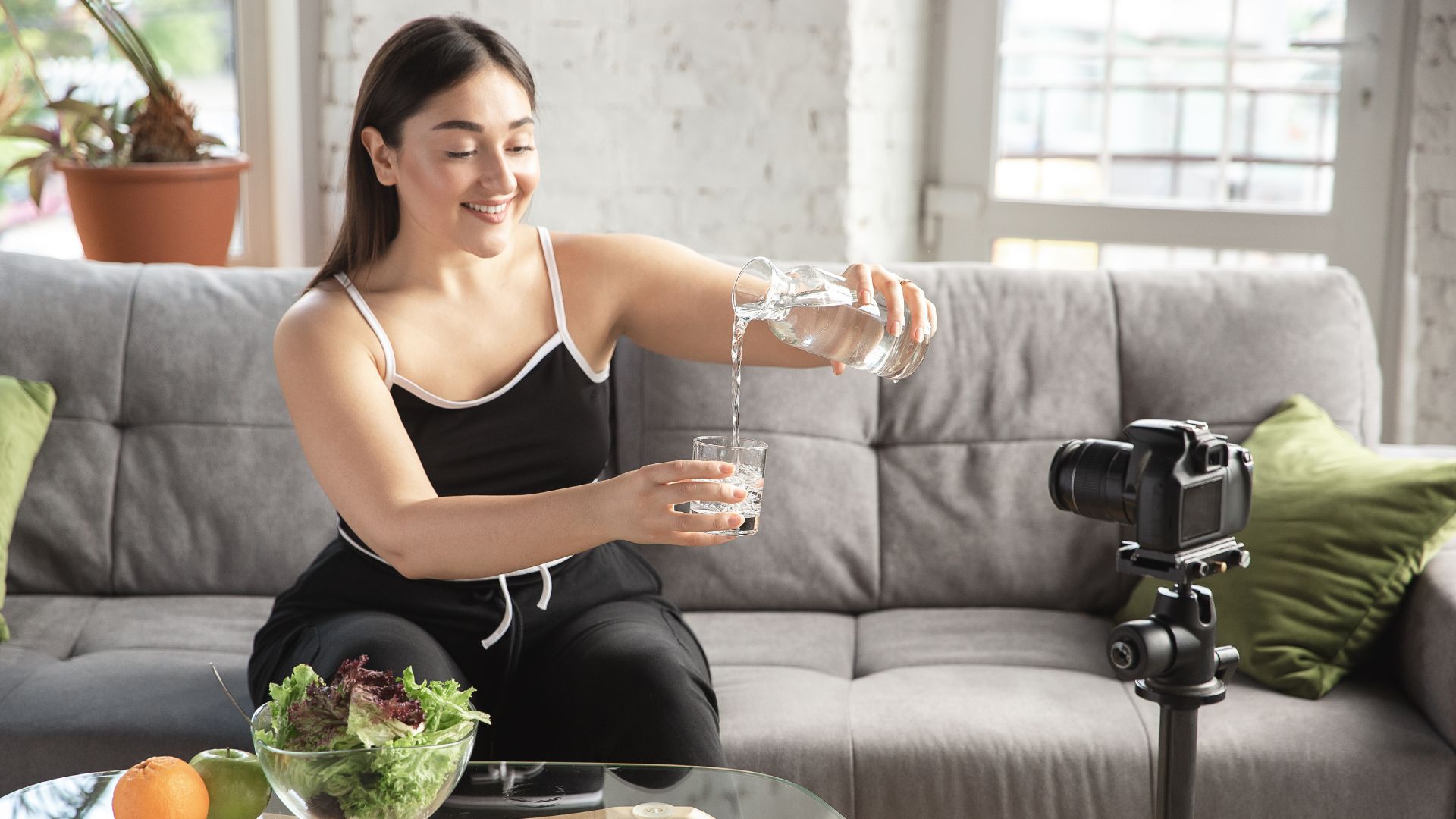Unlocking Customer Growth: Influencer Marketing for DTC Brands in 2024
Unlocking Customer Growth: Influencer Marketing for DTC Brands in 2024
A new year, a new marketing strategy, and this time, we’re talking about Influencer Marketing. It’s the 21st-century take on product placement, and when it’s done right, it can spark exponential growth in your customer base. In this comprehensive guide to Influencer Marketing, we’ll walk you through why you need to consider this marketing tactic and show you how and why Influencer Marketing works.
Why Consider Influencer Marketing for Your DTC Brand?
Adding Influencer Marketing to your advertising strategy is an effective way to engage with potential new customers. When you work with influencers to market your products or services, you tap directly into their large audiences. That’s a whole new pool of potential customers who are likely to trust the influencer’s word on your product. The right influencer and the right product are a recipe for mutual success. Plus, influencer audiences are continually growing, shifting, and changing, meaning your campaigns are almost always destined for fresh viewers.

Influencer marketing has another terrific upside, too, which is that partnering with influencers can help offset some of the costs of content creation—in some instances, the influencer will prefer to use their resources and assets to create the content that promotes your products, or at least share the burden of the overall costs. Another advantage of influencer marketing is the ability to reach new prospecting audiences through the influencer’s social handles. Influencer marketing can also set off skyrocketing growth in a minimal timeframe, which we’ll discuss in detail later in this article when we talk about metrics.
If we’re summarizing the upsides to influencer marketing in this section, we need to include the third upside, which is whitelisting from influencer social handles as a broad prospecting tactic. While one advantage is having an influencer talk about your products to their audience, the other advantage is using that influencer’s content and their social handle to reach new prospecting audiences (not necessarily the influencer’s audience). This “word of mouth” marketing strategy is how we delivered the Outer results you mention below. I think it’s worth a brief summary or mention in this section.
The Evolution of Influencer Marketing
Influencer marketing has been steadily building since the early 2010s when the term ‘influencer’ entered our everyday lexicon. Influencers have been responsible for trends across a spectrum of industries, but most notable would be fashion, home decor, and everyday items like baby gear, which more recently gave rise to the term ‘momfluencer.’ In the early days of influencing, influencers would have to be already well-known enough from other endeavors to amass a large following on social media. (Think the Kardashians—the most obvious example here.) Followers have clamored since Day 1 to find out who and what these influencers are wearing so they could purchase those products for themselves. With influencer marketing, there’s no question about what products are being used.

On the flip side, we have influencers whose celebrity was born from their social media presence. These influencers have built followings based on their content about travel, fashion, makeup, home decor, health and fitness, music, art, and just about anything else you can think of, which means that cross-sector collaboration is always on the table, extending your advertising to even more new audiences. The unique combination of current and up-and-coming influencers means a wide world of untapped marketing is just waiting for you to take advantage of it. But before you dive into contacting all your favorite influencers, let’s take a look at some more terms related to influencer marketing that will give you a better understanding of what your strategies could look like.
Macro-Influencer Versus Micro-Influencer
Influencers can be classified into many tiers, but one easy way to categorize influencers (rather than ‘celebrity before’ or ‘celebrity because’) is by recognizing them as either:
Macro-influencers, who have an extensive reach but often have lower engagement rates among followers or
Micro-influencers, who have a smaller audience but often have higher engagement rates from their audience.

This distinction becomes important when selecting influencers to collaborate with and deciding what advertising trajectory you want to take with your products. For example, a macro-influencer may be a better choice if you’re trying to earn recognition or build awareness for your brand, while a micro-influencer may be the right fit if you’re trying to encourage niche, highly-relevant audiences to purchase your product.
Whitelisting/Allowlisting Versus Influencer-Generated Content
Let’s get these definitions out of the way because we will be talking quite a bit about both these terms moving forward.
Whitelisting/Allowlisting happens when an influencer and a brand agree to let the brand access the influencer’s social media handles to advertise their content to new audiences.
Influencer-Generated Content is content made by the influencer featuring a brand’s products or services, which they share with their own audiences. This differs from user-generated content, where non-influencer social media users create content that features certain products (and positive UGC can be an effective ‘bi-product’ of influencer marketing.)
Now, back to the evolution of influencer marketing. When brands first realized that this was an amazing opportunity, the focus was primarily on macro-influencers—sellers wanted to take advantage of their large followings. Soon, though, brands realized that reach isn’t always everything; engagement is equally, if not more, important. Social media platforms began to adapt their technologies to be more user-friendly for influencer marketing, leading to the collaborations, creator marketplaces, and commission models we see today.
Influencer Marketing Across Different Platforms
Every platform where you can utilize influencer marketing has different tools and methods for posting that content, as well as different guidelines for posting (of course!) Here’s a quick breakdown of popular platforms and how you can use influencer marketing on them.
Meta (Facebook and Instagram): Meta offers partnership ads, which is their term for whitelisting/allowlisting
TikTok: There are two ways to leverage influencer marketing on TikTok, either through Spark Ads or through an affiliate model
YouTube: YouTube Brand Connect is a way for brands and creators to get together and produce branded content in exchange for a payout from the sales revenue generated
Which platforms you choose to use depends on your business’s products and services, although a cross-platform approach is best if you can fit it into your marketing budget. Digital tools like Aspire can help you manage and track your marketing between and across platforms.
Be Data-Driven to Best Leverage Influencer Marketing
When it comes time to create, launch, and manage your influencer marketing campaigns, it’s crucial to be driven by data. You want to make sure that you’re not wasting your ad spend, and there are specific metrics you’ll want to attach to your campaigns. The most popular metrics for influencer marketing are:
Ad Spend: Ad spend is the financial investment you make into your advertising efforts. It’s your total budget for promoting your products or services through various channels, including social media.
Conversions: Conversions are the actions you want potential customers to take after encountering your influencer marketing campaign, such as making a purchase, subscribing, or participating in your brand’s activities.
Revenue: Revenue refers to your brand’s overall income from the campaign. It encapsulates direct sales and the broader positive financial impact on your business.
Return on Ad Spend (ROAS): ROAS quantifies the success of your influencer marketing strategy. ROAS calculates the return you receive on every dollar invested in advertising, providing insights into the campaign’s effectiveness.
Cost Per Acquisition (CPA): CPA is the amount of money you’ve spent to acquire one new customer through influencer marketing. This helps you analyze the efficiency of your marketing campaigns. The lower the CPA, the more efficient the advertising.
Metrics are the lifeblood of any solid influencer marketing campaign. These numbers give you critical feedback about how your ads are being received so that you can make necessary short- and long-term adjustments to your marketing strategies.
Measuring the Effectiveness of Influencer Marketing
It’s not enough to talk about data—we need to show you some data in action so you can get a better understanding of the power of influencer marketing. Here’s an example from a real-life DTC’s influencer marketing campaign in a one-month snapshot. It compares the metrics between non-influencer content and influence-generated content A/B tested against each other in a new client’s prospecting campaign.
| Campaign | Prospecting(Non-Influencer) | Prospecting(Influencer) | Delta |
| Spend | $40,531.55 | $4,102.77 | -887.91% |
| Conversions | 21 | 36 | +71.00% |
| Revenue | $101,086.35 | $171,561.29 | +69.70% |
| ROAS | 2.14 | 37.85 | +1668.69% |
| CPA | $2,074.73 | $131.76 | -93.65% |
As you can see from this example, this brand’s influencer marketing garnered tangible, incredible results, while their branded evergreen content did not fare as well. While your numbers may vary, this is an excellent illustration of why you should add influencer marketing to your advertising strategies. In the example above, this client chose to scale their influencer marketing efforts throughout the remainder of the year after the results of this A/B test heavily favored IGC.
Selecting the Right Influencers for Your DTC Brand
Now that you know the basics of influencer marketing and why it’s an important marketing strategy, it’s time to think about who you want those influencers to be. Keep in mind that you want to work with influencers who align with your brand’s values and whose followers will trust their word about your type of product. Try to target specific audiences by aligning with influencers who are well-known for using products in your sector. A good example might be connecting with an influencer known for interior design to market your furniture products.

Another thing to decide is which platforms you want to employ influencer marketing on—Meta, TikTok, and/or YouTube. With its affiliate program, TikTok offers a unique advantage, where brands and influencers can connect to showcase products. Influencers browse the TikTok Affiliate Shop and request merchandise, which they must spotlight on their channels (For products shipped by seller, creators must post Free Sample content within 17 days of domestic ship date. For products shipped by TikTok, creators must post Free sample content within 12 days of receiving the product.).The more they post about your product and the more it sells, the more they make as an affiliate. That’s a win-win for both the brand and the influencer. Brands can also ‘browse’ for influencers who may be potential partners in marketing.
Meta has yet to adopt a policy like TikTok’s, but it does permit a broad range of allowposting partnerships, which, again, can be good for your brand’s recognition via macro-influencers and engagement via micro-influencers. You need to decide your goals, as well, so that you can choose which type of influencer is best for your brand. A Kim Kardashian may tell the world about your product, but a smaller influencer is more likely to be excited and get other people excited about it.

YouTube’s Brand Connect sits apart from the other platforms because it is more of a portal model for bringing together brands and creators, who then include information about and an endorsement of the brand’s products in their videos.
Closing Thoughts on Influencer Marketing for DTC Brands
Whether you’re new to influencer marketing, or it’s been a while and things have changed, you now have the latest information to help your brand jump into this strategy in 2024. While it’s always important to check each platform for its most up-to-date solutions, crafting an influencer marketing campaign doesn’t have to be complicated.
While there are a lot of components to influencer marketing, once you have a few partnerships and campaigns under your belt, you’ll be a professional in no time. Plus, influence begets influence, so you can expect to see ramped-up engagement and more brand followers after every successful campaign. Happy advertising!
About the Author: Hailey Branham is a Director of Client Partnerships at adQuadrant with 10+ years of digital marketing and advertising experience. She graduated from the University of Texas in 2014 with a Bachelor of Science in Corporate Communication Studies before starting her career at a SaaS company, building and executing paid social media strategies for clients like Shoes.com, Target, Caterpillar, National Instruments, Aramark and more. From there, she worked as an Agency Partner Manager at Meta, where she partnered with best-in-class agencies across the country, adQuadrant being one of them. She joined the adQuadrant team in 2019 and has spent the last 5 years helping ambitious DTC brands unlock their potential and achieve profitable growth at scale. In 2021, Hailey was awarded the Amazing Women in eCommerce Award, which spotlights the impressive women pushing the eCommerce industry forward. A native Texan, she’s a lover of sunshine, hot sauce, and margaritas, and can always be found traveling, hiking, or spoiling her dogs.




